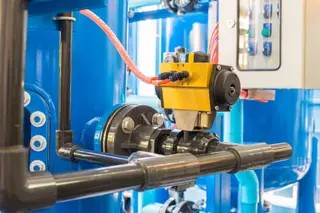


How to Extend the Service Life of Control Valves: Common Control Valve Issues
Introduction
China Control valves are vital in regulating flow, pressure, and temperature in industrial systems ranging from oil and gas to power generation and water treatment. Their performance directly impacts process efficiency, safety, and operational reliability. Although engineered for durability, control valves are subject to wear over time due to harsh environments and continuous operation. Proactive maintenance and smart operational strategies can significantly extend their service life while minimizing downtime and costly failures.
This article covers common control valve issues, proven methods to enhance valve longevity, and best maintenance practices to ensure sustained performance.
Common Control Valve Issues
Even the highest-quality valves can experience performance issues. The most frequent problems include:
1. Internal Leakage
Occurs when the valve fails to seal fully, allowing fluid to bypass the seat. Though difficult to detect externally, excessive internal leakage can reduce process efficiency and damage downstream equipment.
Causes:
Worn or damaged seats and seals
Improper actuator setup or calibration
Incorrect system configuration or signal interference
Debris lodged in sealing surfaces
Solution: Recalibrate positioners, replace worn parts, and inspect internal components regularly.
2. External Leakage
This refers to fluid leaking from the valve body, packing, or bonnet—usually visible or noticeable by pressure drops.
Causes:
Degraded packing or gaskets
Thermal cycling and vibration
Material incompatibility with process fluid
Loose bolts or corrosion
Solution: Replace faulty seals, verify material compatibility, retighten fasteners, and check for structural damage.
3. Sticking or Sluggish Operation
The valve may respond slowly or not at all to control signals, compromising process accuracy.
Causes:
Over-tightened packing
Corrosion on moving parts
Debris or contamination inside the valve
Solution: Clean internal components, lubricate as needed, and ensure torque values are within specifications.
Strategies to Extend Control Valve Lifespan
Maximizing valve durability requires more than periodic repairs. The following proactive techniques can significantly reduce wear and enhance performance:
1. Start with Wide Openings
Operating the valve initially at near-fully open positions focuses erosion on the upstream face of the plug or spool. Over time, operators can gradually reduce the opening to distribute wear along the entire throttling range, extending the useful life of internal components.
2. Lower the Valve Resistance Ratio
Minimizing the pressure drop across the valve reduces cavitation and erosion. This can be achieved by:
Installing downstream orifice plates
Slightly closing manual isolation valves
Selecting valves that operate at wider openings by design
This shift distributes energy losses across the system rather than concentrating them at the valve.
3. Downsize the Valve
Oversized valves operate at narrow openings, increasing instability and localized wear. Instead:
Choose a smaller valve with a better-suited flow coefficient
Or use smaller internal trim within the existing valve body
This ensures more stable control and broader modulation range.
4. Redirect Damage to Non-Critical Areas
Modify trim geometry or operating conditions to steer erosive forces away from critical sealing surfaces. Sacrificial trim parts may also be used to absorb damage while protecting core components.
5. Reverse Flow Direction (When Possible)
Altering the flow direction—where valve design permits—can protect critical surfaces:
Flow-to-open: Erosion impacts sealing surfaces
Flow-to-close: Erosion occurs away from seals, preserving their integrity
Switching to flow-to-close can improve durability in erosive or cavitating applications.
Best Practices for Control Valve Maintenance
A structured maintenance strategy is crucial for reliability and cost control. There are three main approaches:
1. Passive Maintenance (Reactive)
Involves repairs only after a failure. While necessary in emergencies, it increases downtime risk and repair costs.
2. Preventive Maintenance
Scheduled inspections and servicing help catch wear before it escalates. Key tasks include:
Cleaning internals and removing debris
Lubricating stems and trim
Replacing worn packing and seals
Inspecting for corrosion or misalignment
Avoiding stress from poor pipe alignment or nearby vibration
3. Predictive Maintenance
Utilizes real-time diagnostics to anticipate failures. Tools include:
Smart positioners and digital controllers
Vibration and temperature sensors
Acoustic monitors for leak detection
Asset management software to track valve health and trends
Predictive maintenance reduces unnecessary inspections while improving uptime and system integrity.
Conclusion
Control valves are fundamental to the safety and efficiency of process systems. Understanding their failure modes and implementing smart operational and maintenance strategies can dramatically extend their service life. Whether it’s starting with wide openings, reducing pressure drop, or employing predictive technologies, each measure contributes to longer-lasting, higher-performing valves.
Key Takeaway:
Control valves are more than just components—they’re long-term assets. With foresight, care, and the right practices, you can ensure they continue delivering precise control, reduced downtime, and lower operational costs for years to come.Know more about Google SEO Directory
